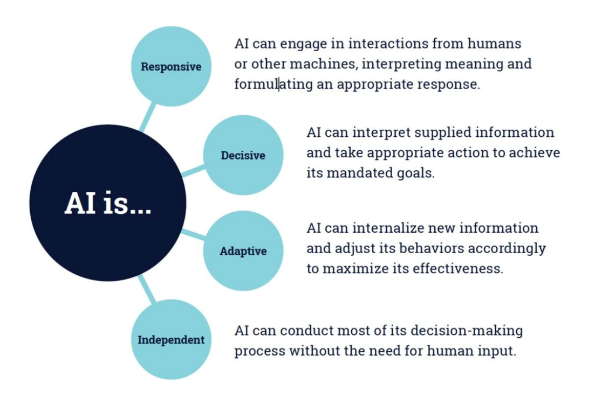4. Emerging Technologies: Artificial Intelligence
4.2. What is Artificial Intelligence?
The original definition of artificial intelligence by McCarthy (1956, cited in Russell & Norvig, 2010) is:
Every aspect of learning or any other feature of intelligence can in principle be so precisely described that a machine can be made to simulate it. An attempt will be made to find how to make machines use language, form abstractions and concepts, solve kinds of problems now reserved for humans, and improve themselves.
Zawacki-Richter et al. (2019), in a review of the literature on AI in higher education, report that those authors that defined artificial intelligence tended to describe it as:
Intelligent computer systems or intelligent agents with human features, such as the ability to memorize knowledge, to perceive and manipulate their environment in a similar way as humans, and to understand human natural language.
Klutka et al. (2018) also, define AI in terms of what it can do in higher education (Figure 21 below)

There are three basic computing requirements that set ‘modern’ AI apart from other computing applications:
- Access to massive amounts of data
- Computational power on a large scale to manage and analyze the data
- Powerful and relevant algorithms for the data analysis
